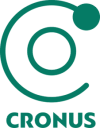Main menu
You are here
Some confocal images of Algae-bacterial sludge
Here are some confocal microscopic images of algae-bacterial flocs from the Goričane WW treatment pilot.
All images were taken on 02-Nov-2011 from the samples taken that day. The conditions of the algae-bacterial biomass were not the best seen so far for the following reasons:
- there was a week of bad weather (cloudy, foggy, some rain) just before the sampling date,
- the paper-mill was stopped for four days just before the sampling day, the water was cold (11-12 ° C).
Some words of confocal microscopy: it is a scanning technology where a laser beam is focused to a certain point in space and resulting fluorescence is recorded. Beside the obvious positioning of the beam in the vieving plane, the focusing point also determines the depth (very similar to the focusing plane for the ordinary microscpy). This enables us to produce several depth slices. When they are combined into layers, they form a 3D image. Excitation wavelength and energy may be adjusted, as well as the filters for the fluorescence emitted light: we may select which wavelengths are shown in which color channel.
Fluorescence is manifested in many materials. In our particular case, the most important is the Chlorophill fuorescence that is excited at 488 nm and emits at 680 nm. The other significannt flourescsence shown in images below is phycocyanin excited at 633 nm and emitting at 680 nm. The third wavelegth that we used is excitation at 543 nm and bandpass filter from 505-530 nm for any other random fluorescence. The wavelengths we used are selected from what is available, they may not be the best excitation wavelengths possible (e.g. for Chlorophill a, the optimal wavelength would be 450 nm, for phycocyanin 610 nm, and who knows what other wavelengths would be appropriate to better see the background of the flocs).
All front images have also the transmission image as an additional channel to one or two flourescence channels. It is taken through the same lens, so it is focused at the same plane as the fluorescence image. The transmission image is black and white (they are taken as the transmission of the same laser beam that is used for the excitation of the fluorescence image.
There were three preparations: the first one was sampled before addition of small quantity of algal biomass, the second one was just after 15 g of algal dry mass was added to the 300 L reactor. The third preparation was one month old sample that was held in the lab in the closed lighted bottle without any mixing. The third sample was much richer in cyanobacteria (which tend to be attached)) that the real samples from the reactor.
From the first and second preparation, we have selected a typical floc, an algae-rich floc and a sparse floc.
Sample preparation is very simple for the confocal microscope: a small amount of the suspension is poured into the optical vessel, few millimetres thick, and the preparation is observed from the bottom of the vessel up. The preparations are living in solution and not fixed in any way. You may notice some motion (best viewed at the transmission images - you can see a large guy wandering around on one of those, but also shown as multiple fluorescing tails of cyanobacteria and blurred and torn image of a diatomea somewhere).
The first scan in all images is the bottom layer, and the scans go up for 2,2 µm for each scan. Image sizes (front) are from 112,5 µm to 450 µm. Pixel size is thus from 0,22 µm to 0,88 µm and pixel depth is always 2,2 µm.
All images are shown as video files, each as a Shockwave Flash Video and an MP4 video. The flat scans show transmission image superimposed with the fluorescence image, the projection videos show the stack of all fluorescence images rotated around, so that we can see the floc from all sides. Flash video files are small (0,2 - 1 MB)) and heavily compressed, MP4 files are larger (2-10 MB) and better quality.
The best possible viewing is through the Zeiss browser. The Windows installer version may be downloaded here (5 MB) and the full set of images is here (640 MB). The browser shows image metadata and allows many other fuctions, like recoloring of channels, sideviews, etc. You should download both ZIP files, unpack and install the browser from the small one, unpack the large zip to some directory, start the installed LSM Image Browser and open the mdb file in the unpacked image directory. Worth doing it!
In general, the colors on the images have the following meaning:
- the black and white image (only in views from the front) are transmission images - analog to conventional microscopy,
- red color is mostly Chlorophyll fluorescence, except on the images having "633" in their name, where it is mostly phycocyanin fluorescence (on the first image, the excitation was strong enough to see also the Chlorophyll, on the second one (with "low" in the name) the excitation was (mostly) under the Chlorophill excitation levels, so we really see mainly phycocyanin),
- green color is random fluorescence from other substances; we adjusted the excitation levels so that it makes the floc material (barely) visible, but there are patches of denser material (or material with stronger flourescence).
- Algal material is usually green or slightly orange (both red and green), as it also emits in green - there are exceptions, e.g. a diatomea in much more red than other algae).
Images:
| Preparation | Shockwave Flash Video | MP4 video | ||
| Front views | Projection | Front views | Projection | |
| A typical floc | 1_1.swf | 1_1_proj.swf | 1_1.mp4 | 1_1_proj.mp4 |
| An algae-rich floc | 1_1.swf | 1_1_proj.swf | 1_1.mp4 | 1_1_proj.mp4 |
| Large algae-rich flocA typical floc | 2_1.swf | 2_1_proj.swf | 2_1.mp4 | 2_1_proj.mp4 |
| A sparse floc | 2_2.swf | 2_2_proj.swf | 2_2.mp4 | 2_2_proj.mp4 |
| Still sludge - chlorophyll | 3_1.swf | 3_1_proj.swf | 3_1.mp4 | 3_1_proj.mp4 |
| Still sludge - Chl and phycocyanin | 3_1_633.swf | 3_1_633_proj.swf | 3_1_633.mp4 | 3_1_633_proj.mp4 |
| Still sludge - Phycocyanin | 3_1_633_low.swf | 3_1_633_low_proj.swf | 3_1_633_low.mp4 | 3_1_633_low_proj.mp4 |
Imaging was made possible by generous help of prof. dr. Marko Kreft and was done at the Institute of Pathophysiology, Medical Faculty, Ljubljana.




